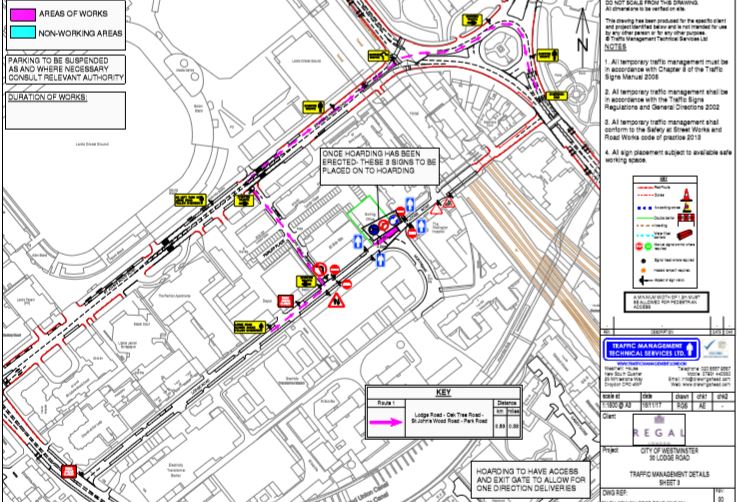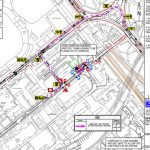The Importance of a Traffic Management Plan: Enhancing Safety and Minimizing Congestion
The Importance of a Traffic Management Plan: Enhancing Safety and Minimizing Congestion
In today's fast-paced world, traffic management has become an integral part of urban planning and development. With the increasing number of vehicles on the roads, it is crucial to have a well-thought-out traffic management plan in place to ensure the safety of commuters and minimize congestion. A comprehensive traffic management plan involves various strategies and measures aimed at improving traffic flow, reducing accidents, and enhancing overall transportation efficiency. From implementing intelligent traffic systems to creating dedicated lanes for public transport, these plans are designed to address the unique challenges of each locality. By prioritizing safety and efficiency, a well-executed traffic management plan can significantly impact the quality of life for residents and visitors alike. This article delves into the importance of having a traffic management plan and how it can contribute to enhancing safety and minimizing congestion in our bustling cities.
The Importance of Traffic Management Plans
Traffic management plans play a vital role in ensuring the smooth operation of road networks and maximizing their capacity. By strategically managing the flow of vehicles, these plans help reduce the risk of accidents and create a safer environment for both drivers and pedestrians.
One of the key benefits of traffic management plan is their ability to minimize congestion. Congested roads not only lead to frustration and delays for commuters but also have a negative impact on the environment. By implementing measures such as traffic signal optimisation, lane management, and dynamic traffic routing, traffic management plans can significantly reduce congestion and improve the overall travel experience.
Moreover, traffic management plans contribute to the efficient use of existing infrastructure. By optimising traffic flow and reducing bottlenecks, these plans can help extend the lifespan of roads and reduce the need for costly expansions or new construction projects.
Benefits of Implementing a Traffic Management Plan
Implementing a traffic management plan offers numerous benefits for both individuals and the community as a whole. One of the primary advantages is enhanced safety. By implementing measures such as speed limits, traffic calming techniques, and pedestrian-friendly infrastructure, traffic management plans can significantly reduce the risk of accidents and protect lives.
Another significant benefit is improved air quality. Congestion leads to increased vehicle emissions, which contribute to air pollution and climate change. By effectively managing traffic flow and reducing congestion, traffic management plans can help mitigate these environmental impacts and create healthier, more sustainable cities.
Additionally, traffic management plans can have positive economic effects. Reduced congestion means less time wasted in traffic, leading to increased productivity and efficiency for businesses and individuals. Moreover, by improving the overall transportation system, these plans can attract investment, boost tourism, and enhance the overall quality of life in a city.
Elements of a Successful Traffic Management Plan
A successful traffic management plans encompasses several key elements that work together to achieve its objectives. These elements include:
**Data collection and analysis**
A thorough understanding of traffic patterns, peak hours, and congestion points is crucial for developing effective strategies. Traffic management plans should rely on accurate and up-to-date data to inform decision-making.
**Traffic engineering**
This involves designing and implementing infrastructure improvements, such as signal optimisation, road widening, and intersection redesign, to improve traffic flow and safety.
**Intelligent transportation systems (ITS)**
Leveraging advanced technologies, such as traffic cameras, sensors, and real-time data analysis, can help monitor traffic conditions and dynamically adjust signal timings or reroute traffic to minimize congestion.
**Public transportation integration**
Integrating public transportation into traffic management plans can help shift commuters from private vehicles to more sustainable modes of transport, reducing congestion and improving overall transportation efficiency.
**Education and awareness**
Promoting safe driving habits, pedestrian awareness, and public transport usage through educational campaigns and awareness programs can help change behavior and create a safer and more efficient road environment.
Steps to Create an Effective Traffic Management Plan
Developing an effective traffic management plans requires a systematic approach. The following steps can guide the process:
**Identify the objectives**
Clearly define the goals and objectives of the traffic management plan. This could include improving safety, reducing congestion, enhancing accessibility, or promoting sustainable transportation.
**Gather data**
Collect and analyze relevant data, including traffic volume, travel patterns, accident records, and existing infrastructure conditions. This data will help identify problem areas and inform decision-making.
**Engage stakeholders**
Involve key stakeholders, such as local authorities, transportation agencies, law enforcement, and community members, in the planning process. Their input and perspectives are essential for creating a plan that addresses the specific needs of the community.
**Develop strategies**
Based on the data and stakeholder input, develop strategies and measures to address the identified issues. This could include infrastructure improvements, traffic signal optimisation, public transport enhancements, or educational campaigns.
**Implement and monitor**
Roll out the plan in a phased manner, monitoring its effectiveness and making adjustments as necessary. Regular monitoring and evaluation will help identify areas for improvement and ensure the plan's long-term success.
**Continuously improve**
Traffic management plans should be dynamic and adaptable. Regularly review and update the plan to incorporate new technologies, address changing traffic patterns, and address emerging challenges.
Key Considerations for Implementing a Traffic Management Plan
While traffic management plans offer numerous benefits, their successful implementation requires careful consideration of various factors:
**Local context**
Each city or locality has unique characteristics and challenges. Traffic management plans should be tailored to address these specific needs and take into account factors such as population density, road infrastructure, and public transportation systems.
**Public support**
Garnering public support and involvement is crucial for the success of any traffic management plan. Engaging with the community through consultations, public forums, and educational campaigns can help generate understanding and acceptance of the proposed strategies.
**Budget and resources**
Implementing and maintaining a traffic management plan requires financial resources and a dedicated team. Adequate funding and staffing should be allocated to ensure the plan's effective execution and ongoing monitoring.
**Continuous evaluation**
Traffic management plans should be subject to regular evaluation and feedback. Monitoring key performance indicators, such as accident rates, congestion levels, and public satisfaction, will help identify areas for improvement and ensure the plan remains effective over time.
Tools and Technologies to Support Traffic Management
Advancements in technology have revolutionized traffic management, providing cities and transportation agencies with powerful tools to optimise traffic flow and enhance safety. Some key technologies include:
**Intelligent transportation systems (ITS)**
ITS uses real-time data and advanced analytics to monitor traffic conditions, optimise signal timings, and provide dynamic routing recommendations. This technology enables cities to respond quickly to changing traffic patterns and minimize congestion.
**Traffic simulation software**
Traffic simulation software allows cities to model and test different scenarios before implementing changes. This helps identify potential bottlenecks, evaluate the impact of proposed strategies, and make informed decisions based on data-driven insights.
**Connected vehicles**
Connected vehicle technology allows vehicles to communicate with each other and with infrastructure, enabling safer and more efficient transportation. This technology can provide real-time traffic information, warn drivers of potential hazards, and optimise traffic signal timings based on actual traffic flow.
**Smart parking systems**
Smart parking systems help drivers locate available parking spaces, reducing traffic congestion caused by drivers searching for parking. By guiding drivers to vacant spots, these systems improve traffic flow and enhance the overall parking experience.
Ensuring Compliance and Monitoring Progress
To ensure the effectiveness of a traffic management plan, it is essential to establish mechanisms for compliance and ongoing monitoring. This includes:
**Enforcement**
Implementing strict enforcement measures, such as speed cameras and traffic police patrols, can deter reckless driving and ensure compliance with traffic regulations.
**Public feedback**
Encouraging the public to provide feedback on the plan's implementation and effectiveness can help identify areas for improvement and address any concerns or issues.
**Regular evaluation**
Conducting regular evaluations and audits of the traffic management plan will help assess its impact, identify shortcomings, and make necessary adjustments to ensure continued success.
By prioritizing safety and efficiency, a well-executed traffic management plan can significantly impact the quality of life for residents and visitors alike. Through the implementation of intelligent strategies and the use of advanced technologies, cities can enhance safety, reduce congestion, and create more sustainable and livable urban environments.
The Role of Traffic Management Plans in Enhancing Safety and Minimizing Congestion
In today's increasingly congested and fast-paced world, traffic management plans play a crucial role in ensuring the safety of commuters and minimizing congestion. These plans encompass a range of strategies and measures aimed at improving traffic flow, reducing accidents, and enhancing overall transportation efficiency.
By implementing intelligent traffic systems, integrating public transportation, and leveraging advanced technologies, cities can create a safer and more efficient road environment. The benefits of well-executed traffic management plans extend beyond enhanced safety - they also contribute to improved air quality, increased productivity, and overall quality of life.
As cities continue to grow and face increasing mobility challenges, investing in comprehensive traffic management plans becomes imperative. By prioritizing safety, efficiency, and sustainability, cities can create a better future for their residents and ensure the smooth operation of their transportation networks.






Comments are closed.